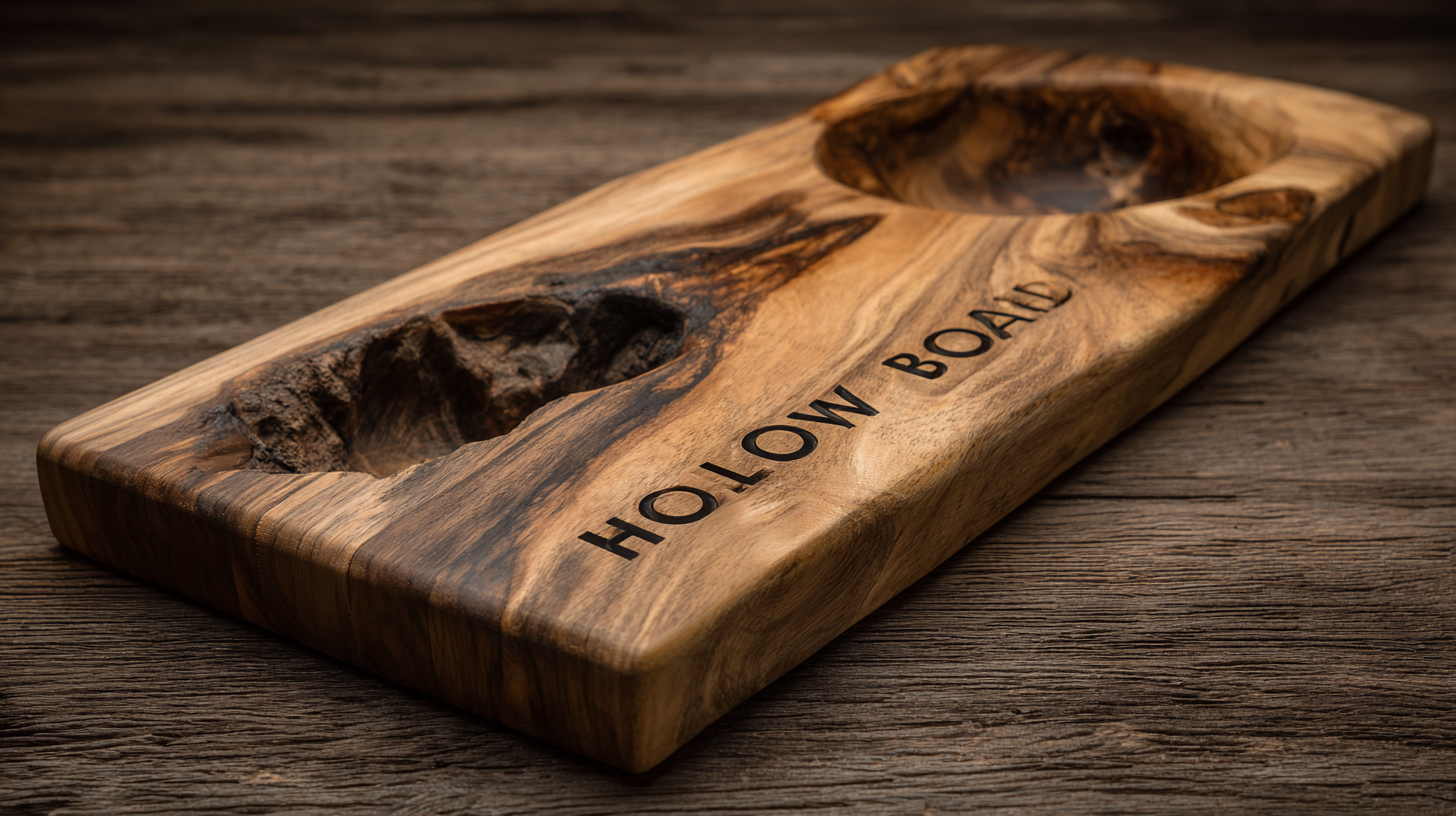


In the rapidly evolving market of packaging and display materials, the search for the best Hollow Board has taken center stage for global buyers. As sustainability and cost-effectiveness become increasingly crucial, many are exploring unique alternatives that offer not only functionality but also environmental benefits. This blog aims to delve into various innovative options that can serve as effective substitutes for traditional Hollow Boards, showcasing their advantages in different applications. Additionally, we will provide valuable tips for buyers to consider when selecting the right material for their needs. Join us as we navigate through these exciting alternatives and empower your decision-making process in the realm of Hollow Board solutions.

Hollow boards have gained significant popularity due to their lightweight yet durable construction, which typically incorporates materials such as polymers and composite fibers. According to a report by Market Research Future, the global hollow board market is expected to reach $3 billion by 2026, driven by the rising demand in industries like packaging, construction, and automotive. The unique design of hollow boards allows for effective weight distribution while maintaining structural integrity, making them an ideal choice for various applications.
When considering the construction of hollow boards, the combination of materials plays a crucial role in determining performance and application suitability. For instance, polyethylene (PE) hollow boards are widely appreciated for their moisture resistance and impact protection, a feature highlighted in a study by Smithers Pira, which emphasized that PE boards are becoming increasingly sought after for outdoor and industrial uses. Furthermore, advances in manufacturing processes, such as extrusion and co-extrusion, have enabled producers to create boards with enhanced features, including UV protection and increased stiffness, catering to the evolving needs of global buyers in an increasingly competitive market.
| Material Type | Weight (lbs) | Thickness (mm) | Durability (years) | Cost (USD) | Environmental Impact |
|---|---|---|---|---|---|
| Polypropylene | 5 | 4 | 10 | 150 | Medium |
| Bamboo | 6 | 3 | 15 | 200 | Low |
| Wood | 7 | 5 | 20 | 300 | Medium |
| Fiberglass | 8 | 3 | 25 | 350 | High |
| Carbon Fiber | 4 | 2 | 30 | 800 | Medium |
When it comes to selecting the best hollow board, buyers often face a multitude of options that vary not only in material but also in design and functionality. This comparative analysis seeks to highlight some unique types of hollow boards, catering to diverse needs and preferences. For instance, foam-core hollow boards are gaining popularity due to their lightweight nature and excellent insulation properties, making them ideal for both packaging and construction. In contrast, corrugated hollow boards offer superior strength and durability, suited for heavy-duty applications while maintaining flexibility in use.
Moreover, environmentally conscious consumers are now turning their attention to biodegradable hollow boards crafted from recycled materials. These alternatives not only reduce the ecological footprint but also provide satisfactory performance for various applications. Each type of hollow board presents its own set of advantages and cost implications, allowing buyers to choose according to their specific requirements. By understanding the differences in composition and usage, global buyers can make informed decisions that best meet their project demands and sustainability goals.
When considering alternative hollow boards, it's essential to identify their best use cases, especially for global buyers looking for unique solutions. These alternatives, which can include materials like recycled plastics or composites, offer practical benefits in various applications.
For instance, in the packaging industry, lightweight and durable hollow boards can reduce shipping costs while maintaining product integrity. Their resistance to moisture and chemicals makes them ideal for packaging in diverse environments.
In construction, alternative hollow boards can serve as excellent insulation materials. Their structure provides thermal efficiency without the added weight of traditional building materials, making them perfect for eco-friendly construction projects. Additionally, these boards can be utilized in furniture design, where their customizable nature allows for creative and functional designs while keeping production costs manageable.
By exploring these unique alternatives, buyers can achieve sustainability goals and innovate within their industries.
When it comes to hollow boards, global buyers are often on the lookout for options that combine performance and durability. There are various types of hollow boards available, each designed to cater to specific needs. For instance, polypropylene hollow boards are known for their lightweight nature, making them ideal for shipping and storage solutions. Their resistance to moisture and chemicals ensures that they maintain integrity even in challenging environments, thus promising longevity in use.
Another noteworthy alternative is the corrugated plastic hollow board, which offers enhanced strength and flexibility. This type is particularly popular in the signage industry, as it withstands outdoor conditions without warping or fading. Additionally, its recyclable nature aligns with growing sustainability trends, appealing to eco-conscious buyers. Evaluating these options against traditional hollow boards reveals significant advancements in technology that enhance both performance under stress and overall durability in various applications. As the market continues to evolve, exploring these unique alternatives provides global buyers with the opportunity to make informed decisions tailored to their specific needs.

When considering hollow board alternatives, it's essential to weigh the costs against the potential benefits. Hollow boards are popular for their strength and lightweight properties, making them ideal for a range of applications. However, exploring alternatives can unveil cost-effective solutions that may offer similar, if not better, functionality. Take, for example, materials like corrugated plastic or solid PVC. These alternatives can provide added durability without compromising on weight, allowing for significant savings in bulk purchases or specific projects where budget constraints are critical.
In making an informed decision, users should assess their specific needs, such as environmental conditions and load requirements. While transitioning to an alternative may initially seem like a cost-cutting measure, it’s vital to consider the long-term benefits, including longevity and maintenance costs. Reviews and case studies from other global buyers can greatly enhance decision-making, as real-world applications often reveal nuances in performance that specifications alone cannot convey. Ultimately, a thorough evaluation of cost versus benefits will empower buyers to make choices that meet both their financial and practical needs effectively.
